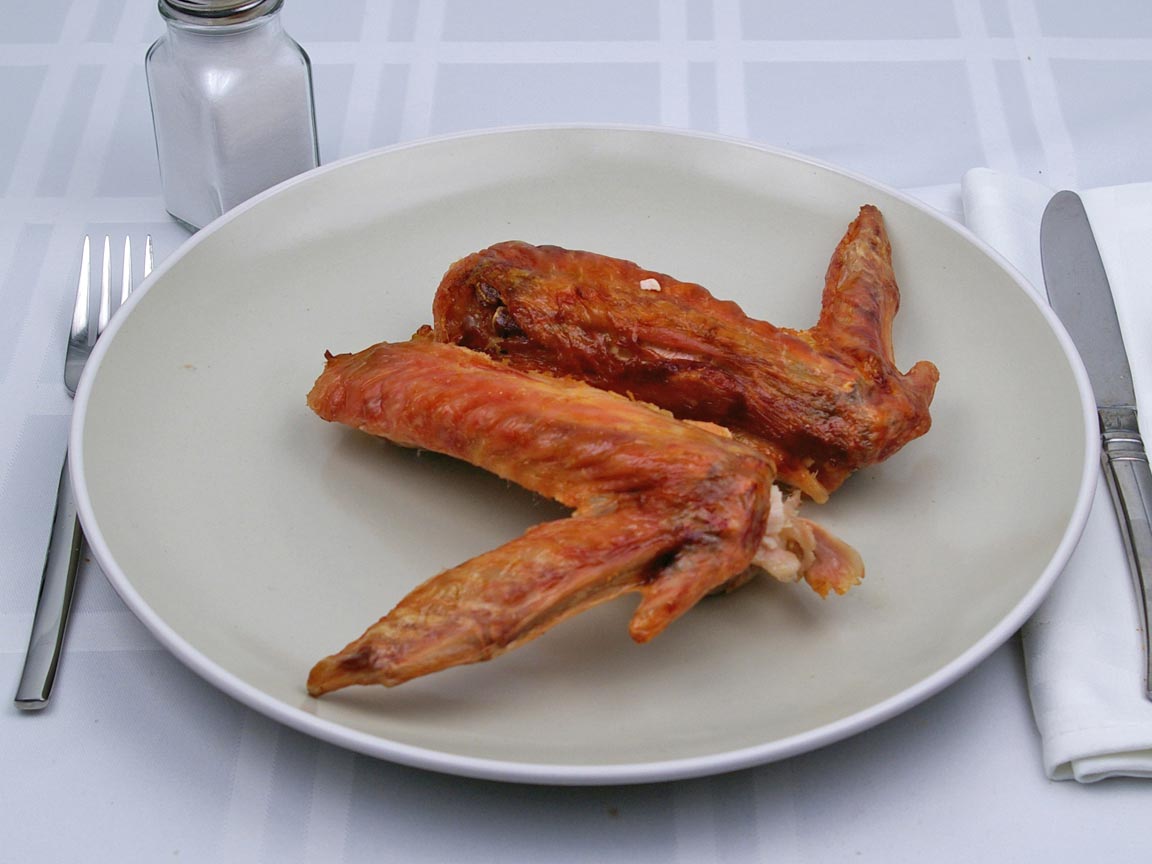Come Thanksgiving, turkeys take center stage As you prepare your holiday spread, you may be wondering – just how many calories are in that tasty turkey wing? This succulent cut boasts an ideal blend of rich flavor and tender meat However, with calorie consciousness on the rise, it’s smart to understand what you’re consuming.
Let’s break down the calorie count and nutrition numbers on turkey wings and explore healthy ways to enjoy them. After reading this you’ll be an expert on the caloric impact of this seasonal treat!
Calculating Calories in a Typical Turkey Wing
Not all turkey wings are created equal. The specific calorie content varies based on these factors:
- Size of the wing (small, medium, or large)
- Whether it is prepared bone-in or boneless
- Cooking method (roasted, fried, or smoked)
- Skin eaten or removed
According to the USDA, a typical roasted turkey wing (about 3 oz) with the bone in and skin eaten contains:
- 204 calories
- 11.1g fat
- 0g carbs
- 24.4g protein
The skin contributes significant fat and calories. A skinless roasted turkey wing (bone-in) has around 130 calories.
The Three Sections of a Turkey Wing
An intact turkey wing consists of three parts:
- Drumstick – The meatiest section, closest to the body. Highest in calories.
- Wingette – Middle section. Moderate calories.
- Tip – The skinny end section. Lowest in calories.
The drumstick packs the biggest caloric punch, while the tip provides lean meat with substantially fewer calories.
How Cooking Method Impacts Calorie Content
Cooking technique significantly affects a turkey wing’s calories and fat. Consider these average values per wing:
- Roasted (with skin) – 204 calories
- Roasted (skinless) – 130 calories
- Fried (with skin) – About 250 calories
- Smoked (with skin) – Roughly 200 calories
Roasting and smoking are lighter preparations. Frying amps up the calories as oil is absorbed into the skin. Go skinless when roasting or smoking to slash calories.
Counting Calories in a Wing with Skin Versus Skinless
Should you eat the skin or remove it? Here’s the calorie difference:
- Turkey wing with skin – Approximately 180 calories
- Skinless turkey wing – Around 100 calories
The extra fat and calories in the skin are sizable. Ditching it cuts calories nearly in half.
Other Factors that Boost Turkey Wing Calories
Aside from skin and frying, these preparation methods also increase calories:
- Breadcrumbs or batter coating
- Thick glazes or heavy marinades
- Serving with high-calorie sauces
- Eating more than one wing!
Building a Healthy Low-Cal Turkey Wing Meal
You can enjoy turkey wings as part of a healthy diet by:
- Selecting smaller wings
- Removing the skin before cooking
- Roasting, grilling, or baking instead of frying
- Pairing with non-starchy veggies, salad, or fruit
A sensibly portioned roasted skinless turkey wing served with green beans and cranberries makes a nutritious choice.
Satisfying Nutrition Benefits of Turkey Wings
Beyond calories, turkey wings provide:
- Protein – 24g per wing. Helps maintain and repair muscles.
- B Vitamins – Aid energy and brain health.
- Iron – Key for oxygen circulation.
- Zinc – Boosts immunity and healing.
- Phosphorus – Supports bone strength.
So savor turkey wings in moderation for a nutritious and delicious treat!
Calorie Ranges for Common Turkey Wing Portions
To make smart menu choices, consider these approximate calorie ranges:
- 1 oz turkey wing meat, no skin – 25 to 35 calories
- 1 small wing with bone, no skin – 100 to 130 calories
- 1 medium wing with bone, with skin – 170 to 210 calories
- 1 large wing with bone, with skin – 230 to 280 calories
Use these estimates to inform your serving sizes.
Healthy Ways to Prepare and Serve Turkey Wings
With some simple tweaks, you can keep turkey wings light:
- Roast or grill instead of frying
- Remove skin before cooking
- Brine or rub wings instead of basting
- Avoid heavy breading or batter
- Skip high-cal dipping sauces
- Enjoy drumsticks over wings for more meat, fewer calories
Then serve wings with veggie sides, make sandwiches on lettuce wraps instead of bread, or chop wings into salads. Get creative!
Satisfy Your Cravings and Eat Light Too
When prepared with care, turkey wings can absolutely be part of balanced, calorie-conscious eating. Savor the flavor, chew the skin if you must, then remove it. Portion wings appropriately based on their high caloric density. Complements wings with nutritious alternatives to keep your meal well-rounded.
This Thanksgiving, gobble down turkey wings to your heart’s content – just be mindful of calories. Adjust portion sizes, skip the skin, and balance with vegetables. Now that you’re a turkey wing calorie expert, you can indulge wisely!

We Try Each Other’s Turkey Wings For Thanksgiving
FAQ
How many calories are in a whole Turkey Wing?
How many calories are in 2 turkey wings?
How many calories are in one wing?
Are turkey wings healthier than chicken?
